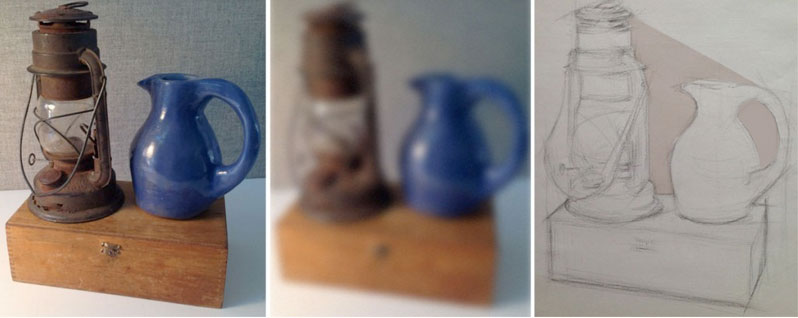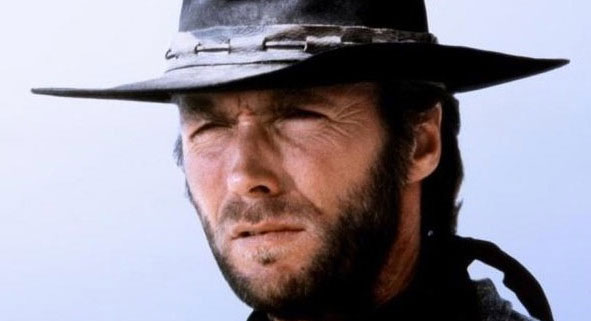As a kid, I remember squirming with anticipation during the climatic moment of truth in vintage Clint Eastwood westerns. The camera zooms to a closeup of Eastwood’s eyes, followed by unbearable tension as the day of reckoning swelters beneath a desert sun. With eyes narrowly focused, the legendary Clint Squint always spelled doom for the bad guys. We sketchers can take a cue from Eastwood’s famous squinting technique in learning to draw more accurately from observation.
When drawing complex subject matter, it’s possible to stray from the path of accurate observation and find yourself lost in the details. Frustration can sneak up from behind as you become overwhelmed with the amount of information you’re taking in.
Confusion with too much to draw can feel like you’re facing an intimidating gang of cattle rustlers at high noon instead of still life objects on a table. At this point it’s important to simplify what you’re looking at, to focus on individual elements. Here’s how squinting your eyes can save the day:

1. Set your drawing instrument down. Breathe. Focus your eyes on the area of difficulty in your composition, such as the space you’re trying to draw between the lantern and pitcher. This is called negative space or negative shapes.
2. Squint your eyes until they’re almost closed, to the point of seeing through your eyelashes. This will soften edges and shadows while isolating focused details you wish to study.
3. While squinting, you can see the basic shapes of objects. The spaces between objects will appear more like shapes, making them easier to measure and draw. Accurately drawn shapes and spaces become the foundation of a successful, realistic composition. Also, by completely closing one eye. you can shift from binocular to monocular vision. This flattens your field of vision, allowing you to see important angles and curves, such as the handle on the lantern and handle on the vase.
Cut to Eastwood’s Josey Wales in the 1966 spaghetti western, The Good, The Bad, and The Ugly: “Now remember, things look bad and it looks like you’re not gonna make it, then you gotta get mean. I mean plumb, mad-dog mean. ‘Cause if you lose your head and give up, then you neither live nor win. That’s just the way it is.”
Fortunately, in drawing, we can relax and work toward a happy ending. If you get lost in the complexity of details while drawing from observation, you don’t “gotta get mean” to solve problems of measuring accurate proportions.
All you gotta do is squint.
Rob Court
Latest posts by Rob Court (see all)
- Drawing With Friends - April 11, 2022
- Frozen in Time: Cellphone Users as Models to Draw - April 8, 2022
- Getting Out & Getting Real - June 20, 2021
- Life Lines: Sketching the Unseen World of Movement - June 20, 2021
- The Ups & Downs of Urban Sketching - May 9, 2021
